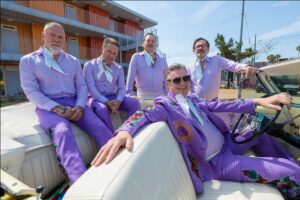It’s hard to imagine what my life would be like without jazz music. It dominates so much of what I listen to nowadays and provides a particular brand of aural satisfaction that I can’t quite get from any other form of music, no matter how good.
But to just mention the term “jazz” alone is not quite specific enough, at least not for me, and while I do love it all – all shapes, forms, and incarnations of the brilliant music – what I really find myself returning to again and again, without fail, is the jazz music made in the 1920s and 1930s.
To many that I’ve spoken to, this is the period in which jazz was “just dance music.” Nothing special. It was merely there for swing dancing and jitterbugging. The music, therefore, was designed more as a vehicle for a social outing than it was for something good to listen to as a piece on its own, with merit as a solid piece of music. Thus, according to critics, the New Orleans and Dixieland jazz of the 20’s and Big Band swing of the 30’s were inferior to the more cerebral and exclusive bebop jazz that would follow in the 40s.
Are they wrong? In many ways, I believe so. Surely, the jazz I find most favorable was, indeed, dance music. But was that all it was? Certainly not. The original New Orleans jazz groups had a unique sound when they happened upon the scene, one of collective improvisation. This is really where the improvisational factor evident in jazz was birthed, and in full swing. The musicians would not merely take a solo and improvise, rather, all of the musicians in the front line (clarinetist, trombonist, and trumpeter) would improvise and solo simultaneously around a melody throughout the entire song, creating a dense and busy texture unlike any other.
Sonically, New Orleans jazz of the 20s was vastly different in this way, different from music created before or since. This was a music of spontaneous expression from every musician involved, pouring from themselves not something that was written down (as many of these early jazz musicians couldn’t read music), but what was inside of them intuitively. This makes even more sense when one learns this music’s extremely close ties with the blues. Listen to Louis Armstrong and King Oliver wailing the blues from their cornets and tell me that it’s just dance music. The music was often frantic, jittery, and certainly dance-able, but there was a great deal of emotional value as well.

Now when the 1930s rolls around and big band swing becomes the chosen music of the day, one might think the “just dance music” argument might prevail, and, indeed, the argument may become stronger, but in my opinion, it is still far from true in many cases. Sure, big bands belonging to those like Sammy Kay and the like are generic swing fare, but there are those in the era who helped create legitimate and masterful art.
It was here that jazz became more organized. Collective improvisation was largely a thing of the past, and oftentimes, the musicians in these bands were – for obvious practical reasons – required to read and understand music notation. However, in musicians like Benny Goodman, the jazz tradition was kept alive with his masterful improvisational soloing and overall stunning virtuosity. Few soloists from the big band era make a mark like Goodman did.

But along with a spotlight on soloists, the Big Band era created works that, as opposed to the frenetic and busy sounds of the 20s, were cohesive and, frankly, beautiful. Glenn Miller’s famous “Moonlight Serenade” was so gorgeous and emotive that it would literally bring members of the audience to tears. Again, I’m not sure music meant solely for dancing could have this kind of emotional effect on people.
In fear of rambling for too long, I will conclude by saying that bebop and the various forms of jazz that followed are headier, more harmonically complex, and more exclusive than that of the 20s and 30s, but that, in no way, makes the music simple or inferior. Some of the greatest jazz musicians came from these eras: Louis Armstrong, Fats Waller, Benny Goodman, Artie Shaw, Bix Beiderbecke, Buddy Rich, and many, many more. The music could be expressive and emotional, both for audiences and musicians alike. The fact that the songs had a dance beat does not detract from their validity as good music or as good art. I suggest giving this earlier incarnation of jazz a listen, seeing the connections to the jazz music of today and appreciating the differences.
-Andrew Oliver





More Stories
A Cup Of Coffee With Whitney Miller (Exclusive Interview)
Knocked Loose’s “Don’t Reach For Me” has entered Spotify’s USA Viral 50 chart
An underrated Deftones song from ‘Saturday Night Wrist’ is getting more attention, thanks to their Coachella performances